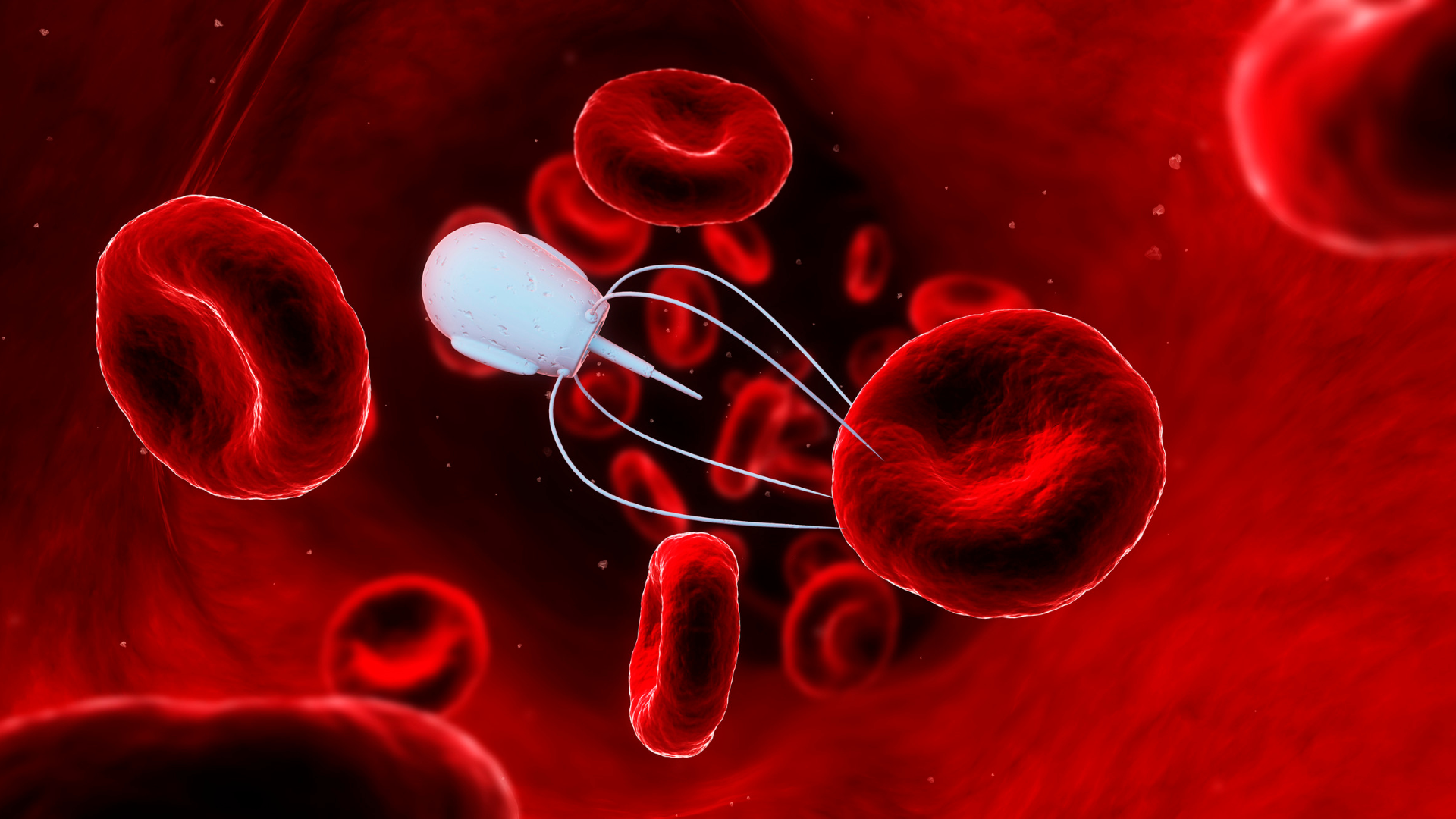Inhaled Biologics: Where Are We Now?

Biologic drugs are a fast-growing and powerful form of therapy that show great potential for treating rare and serious diseases. Although promising, the downside of biologics is that they typically cannot be taken in an oral tablet form, so they often need to be administered parenterally. This means that patients requiring ongoing treatment must frequently deal with injections that have to be administered by a healthcare professional, heightening costs. Furthermore, most patients find injections painful and uncomfortable, dissuading them from medicating and ultimately decreasing treatment compliance.
Therefore, the inhalation route of delivering biologics is a sought-after technology and delivery is being evaluated as an alternative to injections, especially for treatment of respiratory diseases. Oxford Global’s Formulation & Delivery US 2022 conference brought together scientists who are looking toward the delivery of biologics into the lungs rather than administered with needles and syringes. This would remove the downsides associated with injections and offer the possibility for direct targeting to the patient’s lungs. However, there are many CMC challenges that are just beginning to be considered.
What is the Future of Inhaled Biologics?
Mariam Ibrahim, Senior Scientist at AstraZeneca, and moderator for the session asked the panel what they thought lay in the future for the field of inhaled biologics. Some biologics currently have to be administered via injection on a regular basis, such as those that manage asthma. Ibrahim asked how inhaled biologics would respond to the market need to simplify these kinds of therapies. Furthermore, she asked about the development of inhaled biologics for systemic delivery and the possibility of inhaled vaccines.
Maria Sörhede Winzell is formerly the Director at AstraZeneca. She said that the field of inhaled biologics was currently at an interesting phase of development: “We are learning a lot about biologics and how to administer them.” Among the kinds of optimisation that scientists are currently working on are methods of reducing the necessary dose and delivering the therapy to the site of action. For example, one area of note is specifying therapeutic delivery to cancer cells in the lungs rather than treating the whole body (by injection). Winzell said that this is dependent on overcoming the hurdles that come with creating stable and safe formulations.
- Inhaled Biologics Discussion Group Report
- Inhaled Biologics Delivery: A Resurgent Market?
- Optimising Patient Centric Design for Inhaled Products
David Cipolla is Vice President of Research at Insmed, and his team develops novel, targeted therapies to help serve the critical unmet needs of patients battling serious and rare diseases. Cipolla said that the interest in inhaled biologics is mainly focused on local lung delivery to treat respiratory disease, and includes recent innovations in antisense oligonucleotides, mRNA, and lipid nanoparticles. The more recent interest in delivery of inhaled and nasal biologics has partly stemmed from the urgency to develop vaccines or treatments against viral pathogens in response to the Sars-CoV-2 pandemic. Regarding the use of the lung as a portal for systemic delivery of biologics, Cipolla was hesitant to say that there was a resurgence in interest. “Competitive delivery technologies are always advancing, so you can’t think about your product concept in a vacuum. During development, you have to continually revaluate your approach to ensure that it still warrants support relative to the other opportunities in your pipeline,” he said.
Pavan Muttil is an Associate Professor at the University of New Mexico; he said that the two advantages of inhaled biologics are the ability for localised delivery and the utilisation of local immune responses in the lungs, which can recruit other immune cells and immune mediators, both locally and systemically. Muttil expanded on this: “When you’re trying to deliver antibiotics into the lungs, the goal is to kill all of the pathogenic bacteria in the respiratory tract; you’re not tapping into the immune response, which is critical to clear the infection.” He continued: “However, with biologics and vaccines, the mode of action depends on the host to mount a protective immune response against the pathogen.”
Guidance From Health Regulators
The panel then opened up the floor to audience questions. One attendee asked whether the panel expected to see any regulatory guidance from the health authorities for inhaled and nasal biologics in the coming years. Secondly, they asked if that guidance were available, what key points would need to be included so that data generated during CMC development justifies the efficacy and safety of those dosage forms.
Cipolla tackled the first question noting that none of the panellists were tapped into the FDA’s position and so his response did not reflect an official Agency opinion. However, from the perspective of precedent and based on historical timing of other guidance from regulators, Cipolla offered that it was unlikely we’d see one for inhaled biologics in the near future since the science is relatively new and standards are evolving.
Turning to the second question, Cipolla added that the kind of guidance that would be most valuable to developers would be one that provides examples and options for how the developer might approach tackling the CMC challenges. For example, when dealing with the presence of aggregates in an inhaled biologic, the guidance could list the characterisation methods and strategies that might be considered acceptable. For example, size exclusion chromatography, which was discussed by the other speakers.
Winzell also took this question by reframing it in terms of what is measured. She explained that when it comes to reconstituting the powder, it is important to only put limits on what makes sense for an in vivo situation.
In these situations, it is important to factor in toxicological studies. Preclinically dosing animals is very different to dosing humans. Animal studies involve the subject sitting in equipment for a much longer time breathing in the powder, whereas human use of inhalation devices is quicker. “However, it will still point in a direction for us to take,” she said.
Winzell also stressed the significance of the types of excipients used in a formulation. For parenteral administration, powder is usually reconstituted and then injected. Furthermore, lyophilised powders are usually designed to be reconstituted for injection while inhalation dry powders are designed to be aerosolisable and stable for a long shelf life.
Therefore, Winzell reiterated the importance of being careful to consider what is in the dry powder and what is measured as aggregates. “The excipients, at least the amino acids used in spray dried formulations, have low water solubility, so if we exceed concentration of the solubility upon reconstitution, it will form insoluble particulates and will confound interpretation of what we measure.”
Immune Response to Inhaled Delivery of Biologics
Another question from the audience asked how much was known about the immune response that comes after the inhalation of biologics. Muttil said that his team always considers whether their biologic formulation could lead to an unwanted immune response, such as a cytokine storm in preclinical studies.
“There is a very fine balance between a good immune response and one that is too much,” Muttil said. The lung is a sensitive organ, and adverse immune reactions in the lung could be lethal; preclinical scientists must be careful when testing inhaled biologics in animals.
“We published a study where we discussed the differences in preclinical inhaled studies and how this differs from human aerosol studies; these differences between preclinical and clinical studies make it challenging to translate animal results into humans,” Muttil added. For example, animal aerosol delivery devices work on a different mechanism than human inhalers. Further, animals and humans have different lung anatomy and structure. To overcome these challenges, inhaled preclinical studies of biologics should also include non-human primates since their immune response is more similar to humans’.
While parenteral delivery uses more or less the same delivery devices for animals and humans (needles and syringes), preclinical development of inhaled biologics does not share this simplicity. Muttil explained that the inhaled devices used in animals are “totally different” from those used in humans. “In preclinical studies, we tend to use either a whole body chamber or devices that force the formulation into the respiratory tract; human inhalers do not work on similar mechanisms.”
Furthermore, biologics present a significant challenge for inhalation due to the immune response that needs to be accounted for. Muttil recollected how approximately 15 years ago, the FDA was receiving a critical mass of applications for nanoparticle-based therapies, mostly for cancer immunotherapy. A problem that emerged from this influx of applications was that each company based their submission on their own approach to nanoparticle characterisation, without much consistency in characterization.
The FDA’s solution to this dilemma was to set up their own lab: The Nanoparticle Characterization Lab (NCL), in 2004. Herein, any company sending a nanoparticle submission to the FDA had to refer it to the NCL. The NCL comprehensively characterizes nanoparticles, including their size, shape, composition, and surface properties. The NCL thus works to establish standards and protocols for the characterisation of nanomaterials to ensure that the data generated by different labs and companies are consistent and reliable.
Check out Oxford Global’s Formulation & Delivery conference. Learn from and meet leading experts in pharmaceutical science, addressing the critical strategic advances and technical innovation in formulation, drug delivery and drug product development.







